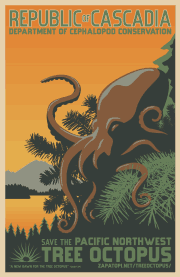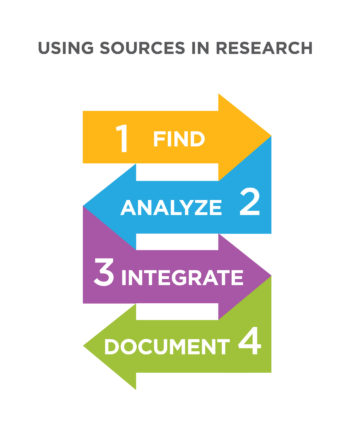4.1: Introduction to Research Process
- Page ID
- 5293
- Identify preliminary, intermediate, and advanced search techniques
- Identify methods of analysis to assess the quality and reliability of a source
- Identify issues of plagiarism and academic dishonesty
- Identify MLA document formatting and citation practices
Why is it necessary to identify components of the research process?
The Pacific Northwest Tree Octopus

Figure \(\PageIndex{1}\)
A few years ago a little-known animal species suddenly made headlines. The charming but elusive Tree Octopus became the focal point of internet scrutiny.
If you’ve never heard of the Pacific Northwest Tree Octopus, take a few minutes to learn more about it on this website, devoted to saving the endangered species.
You can also watch this brief video for more about the creatures:
Source Reliability

Figure \(\PageIndex{2}\)
If you’re starting to get the feeling that something’s not quite right here, you’re on the right track. The Tree Octopus website is a hoax, although a beautifully done one. There is no such creature, unfortunately.
Many of us feel that “digital natives”–people who have grown up using the internet–are naturally web-savvy. However, a 2011 U.S. Department of Education study that used the Tree Octopus website as a focal point revealed that students who encountered this website completely fell for it. According to an NBC news story by Scott Beaulieu, “In fact, not only did the students believe that the tree octopus was real, they actually refused to believe researchers when they told them the creature was fake.”[1]
While this is a relatively harmless example of a joke website, it helps to demonstrate that anyone can say anything they want on the internet. A good-looking website can be very convincing, regardless of what it says. The more you research, the more you’ll see that sometimes the least-professional-looking websites offer the most credible information, and the most-professional-looking websites can be full of biased, misleading, or outright wrong information.
There are no hard and fast rules when it comes to resource reliability. Each new source has to be evaluated on its own merit, and this module will offer you a set of tools to help you do just that.
In this module, you’ll learn about tips and techniques to enable you to find, analyze, integrate, and document sources in your research.


